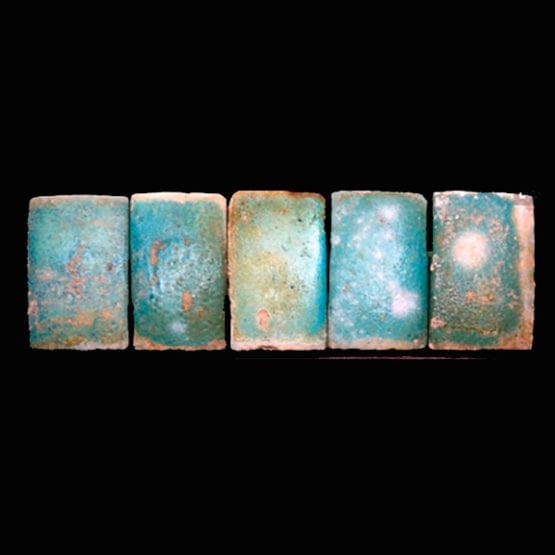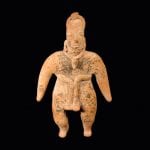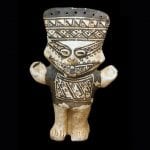Description
Wall Decoration From the Palaces And Funerary Apartments of Kings. The Egyptians believed that faience was a magical substance imbued with light and the powers of rebirth. They called it tjehnet meaning that which is brilliant or scintillating. To the Egyptians, objects made of faience shimmered with an immortal light and offered the brilliance of eternity. Faience was an opulant material and thus suitable for kings. Perhaps its earliest use on a large scale was for interior decoration. King Djoser lined the subterranean corridors of his Step Pyramid at Saqqara with approximately 36,000 green faience tiles of this type. Similar tiles also lined the temple walls at Abydos, Hierakonpolis, and Elephantine.












